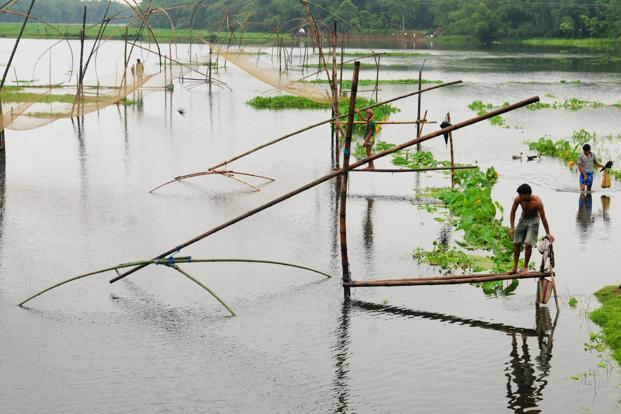An innocuous news item on the discovery of a predatory fish in a lake near Kolkata may have excited anglers, but it is cause for serious concern. The newly discovered alien fish, known as alligator gar, could potentially wipe out every local species in the lake where it was discovered.
The news item flags a larger problem about the status of freshwater fish in India; an aspect of our rich biodiversity that has for long been neglected. As many as 120 species of freshwater fish in India are threatened and in need of immediate protection and yet, how often does any conservation policy focus on the ichthyofauna (fish life) of India?
Even the Wildlife (Protection) Act of 1972 that accords protection to all forms of biodiversity has been negligent of freshwater fish and marine species—in its original form, it focused largely on terrestrial species. It was only in 2001 through a gazette notification that species such as marine sharks, rays and 15 kinds of molluscs were included, after active campaigning by biodiversity experts. But hundreds of fish species still need protection from over-exploitation.
So why is this latest discovery of this exotic fish in our river waters a cause for worry? Experts say the alligator gar is a highly carnivorous fish. It not only kills other fish but there are reports of it attacking humans too. Its eggs are poisonous as well. It has no natural enemies and hence can become invasive in no time, destroying the local ecosystem and biodiversity.
Not just Kolkata, the alligator gar has already spread to other states such as Telangana and Andhra Pradesh and reports of the fish becoming invasive in water bodies of Tamil Nadu are also coming in. So how did this fish end up in our river waters when it is not from here?
Experts say they are usually smuggled into the country to be reared in aquariums. But when the fish starts gaining size and kills other fish, owners often release them in local water bodies.
The commercial pressures from the aquarium trade are not the only cause for the decline in Indian fish species. Pollution in our rivers and construction of dams also impact fish populations. Fish diversity in our rivers, once teeming with life, has also gone down.
Take the Krishna, one of the longest Indian rivers, with a length of about 1,400km. A study on ‘Ichthyofaunal diversity of Krishna river in Telangana’ in 2014 by the department of fisheries found over 109 fish species in the river. But worryingly, availability of almost half that, about 46%, was scanty to rare. Further, some of the commercially and economically important species, which had high market value, were threatened. The study found that the important riverine species of major Indian carp was on the threshold of extinction.
Fish population in the Ganga, too, has witnessed a sharp decline due to construction of barrages and canals. The Farakka barrage, for example, is the main cause of the decimation of the once-thriving hilsa fisheries along the river. The average yield of major carp in the Ganga has declined by 90% in the past four decades.
The diversity of fish in the rivers of the Western Ghats have also seen a decline. An assessment done by the International Union for Conservation of Nature (IUCN) in 2010 on endangered fish species in India threw up some interesting results. Around 30 fish species in the Western Ghats have been included in the endangered species list and 15 species in the critically endangered list of the IUCN.
The report states that more than half of the fish species (56%) are harvested for human consumption, while 37% are captured for the aquarium trade. Fish species such as the Deccan mahseer and a tiny fish known as Miss Kerala (in demand for its decorative value) are victims of over-exploitation.
So why should we even care about fish diversity in our rivers? More than 75% of fisherfolk in India depend on rivers for their livelihood. Freshwater fish may be the most threatened group of vertebrates on earth after amphibians, with global extinction rates for fish being unprecedented. Given the high percentage of India’s human population that depends on these species for food, it would be in everyone’s best interest to have a conservation plan for them.
And for that reason, it’s time for a law that protects fish diversity in our rivers.
[Source:- Live Mint]





